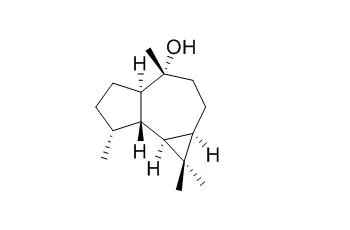| In vitro: |
| J Oleo Sci. 2017 Mar 1;66(3):307-314. | | Acaricidal Potentials of the Terpene-rich Essential Oils of Two Iranian Eucalyptus Species against Tetranychus urticae Koch.[Pubmed: 28190801 ] | There is a rapid growth in the screening of plant materials for finding new bio-pesticides.
METHODS AND RESULTS:
In the present study, the essential oils of E. oleosa and E. torquata leaves were extracted using a Clevenger apparatus and their chemical profiles were investigated by Gas Chromatography-Mass Spectrometry (GC-MS). Among identified compounds, the terpenes had highest amount for both essential oils; 93.59% for E. oleosa and 97.69% for E. torquata. 1,8-Cineole (31.96%), α-pinene (15.25%) and trans-anethole (7.32%) in the essential oil of E. oleosa and 1,8-cineole (28.57%), α-pinene (15.74%) and Globulol (13.11%) in the E. torquata essential oil were identified as the main components. The acaricidal activity of the essential oils of E. oleosa and E. torquata were examined using fumigation methods against the adult females of Tetranychus urticae Koch. The essential oils have potential acaricidal effects on T. urticae. The essential oil of E. oleosa with LC50 value of 2.42 µL/L air was stronger than E. torquata. A correlation between log concentration and mite mortality has been observed.
CONCLUSIONS:
Based on the results of present study, it can be stated that the essential oils of E. oleosa and E. torquata have a worthy potential in the management of T. urticae. | | Nat Prod Res. 2008 May 10;22(7):569-75. | | Antimicrobial activity of globulol isolated from the fruits of Eucalyptus globulus Labill.[Pubmed: 18569693 ] |
METHODS AND RESULTS:
An antimicrobial sesquiterpene was separated by bioassay-guided isolation from the petroleum ether fraction of the ethanol crude extract of Eucalyptus globulus Labill (Myrtaceae) fruits, and was identified as Globulol by physicochemical properties and spectroscopic analysis. Mycelial growth method revealed that the median effective inhibitory concentration (IC50) values of Globulol on Alternaria solani, Fusarium oxysporum f.sp. niverum, F. graminearum, Rhizoctonia solani and Venturia pirina were 47.1 microg mL(-1), 114.3 microg mL(-1), 53.4 microg mL(-1), 56.9 microg mL(-1), 32.1 microg mL(-1) and 21.8 microg mL(-1), respectively. MTT-colorimetric assay revealed that IC50 values of Globulol on Xanthomonas vesicatoria and Bacillus subtilis were 158.0 microg mL(-1) and 737.2 microg mL(-1), respectively.
CONCLUSIONS:
The results indicated that Globulol could be a main antimicrobial compound in the ethanol crude extract of E. globulus fruits. |
|






 Cell. 2018 Jan 11;172(1-2):249-261.e12. doi: 10.1016/j.cell.2017.12.019.IF=36.216(2019)
Cell. 2018 Jan 11;172(1-2):249-261.e12. doi: 10.1016/j.cell.2017.12.019.IF=36.216(2019) Cell Metab. 2020 Mar 3;31(3):534-548.e5. doi: 10.1016/j.cmet.2020.01.002.IF=22.415(2019)
Cell Metab. 2020 Mar 3;31(3):534-548.e5. doi: 10.1016/j.cmet.2020.01.002.IF=22.415(2019) Mol Cell. 2017 Nov 16;68(4):673-685.e6. doi: 10.1016/j.molcel.2017.10.022.IF=14.548(2019)
Mol Cell. 2017 Nov 16;68(4):673-685.e6. doi: 10.1016/j.molcel.2017.10.022.IF=14.548(2019)